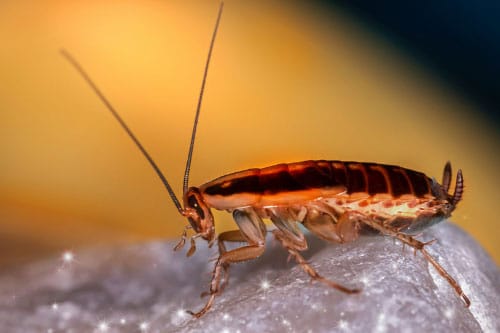German cockroaches look relatively similar to American cockroaches, but are much smaller, usually roughly a half inch in length. They are unable to fly well but can manage a short distance if they need to escape or reach something. These are arguably the most widespread pest cockroaches, appearing even far north and south in human structures where they could not survive outside for long due to cold climates. They are notable for invading food establishments, including restaurants, and commercial structures that have food present, like hotels or care homes.
Not truly German, these cockroaches are of highly disputed origin, with historical theories identifying Europe or Ethiopia, but most recently speculated as emerging from Southeast Asia. As scavengers, they will eat a wide range of foods including meats, sugars, and carbs, enabling them to survive in a multitude of settings. Facing a shortage of other foods, they may resort to consuming things like glue and toothpaste! These cockroaches have very resilient populations which can be extremely difficult to eradicate, as they mature quickly and even a few eggs escaping control measures can reestablish the population. Control methods need to be consistent, sustained, and paired with measures to prevent reintroduction of the population from outside to be successful.


